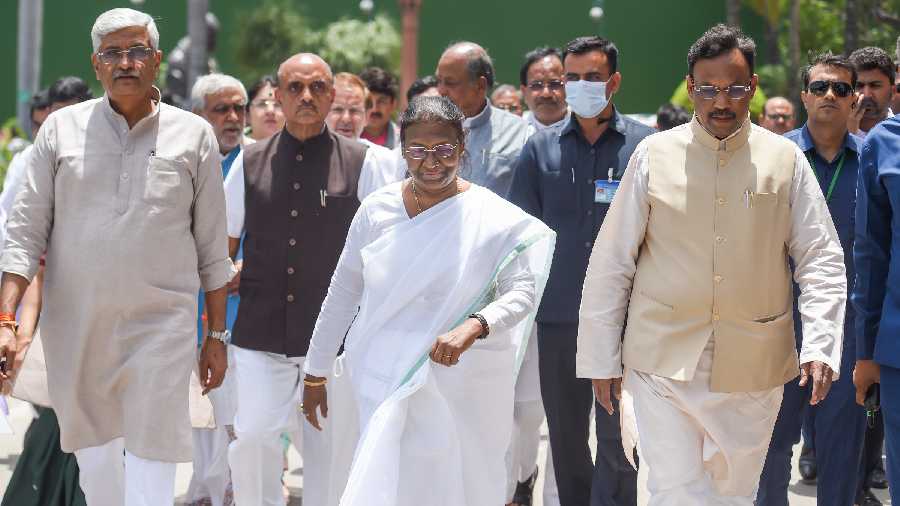Adivasis living in Central India make up one of the most marginalised sections in the country. But they live in the most resource-rich areas that attract industrialists and the State. Although scheduled tribes constitute 8.6% of the total population, they make up 50% of the people who have been displaced or dispossessed from their land for the extraction of minerals, construction of large dams or establishing wildlife sanctuaries after Independence.
In spite of work by the government and non-governmental organisations, development has eluded adivasis. Continuous dispossession and displacement is one reason for this. Development programmes have been imposed from above and executed without taking into account the distinct economic, social and cultural needs of these people.
Recently, Professional Assistance for Development Action brought out the Status of Adivasi Livelihoods Report 2021, covering two tribal-dominated states — Jharkhand and Odisha. SAL 2021 shows the overwhelming deprivation of adivasis in terms of income, food security and child nutrition as well as in access to public service, education and landholding. This influences their livelihood outcomes.
In Jharkhand, the average annual income of adivasi households is Rs 75,378 and in Odisha, it is Rs 61,263. A National Sample Survey report puts the average income of agriculture households in India in the year 2018-19 at Rs 122,616. Adivasi households thus earn at least 60% less. There are nearly 195 million undernourished people in India — around 16% of its total population. SAL 2021 finds that 53% of adivasi households in Jharkhand and 55% of those in Odisha are food-insecure in varying degrees. A staggering 50% of children under the age of five in the adivasi households in both states have head circumferences outside the 3-97 percentile, indicating that they are malnourished.
Roads and telecommunication are crucial to livelihood. The SAL 2021 shows that 74% of adivasi villages in Jharkhand and 72% in Odisha were connected with all-weather roads. Of these, 63% and 80%, respectively, are motorable. This figure is much worse than the national average. The situation of public transport is also poor in adivasi villages. In Jharkhand and Odisha, only 46% and 57% of villages, respectively, are linked to their block headquarters through public transport. Mobile network was available for only around 70% of adivasi villages in both the states.
Education is an important factor influencing livelihood outcomes. Literacy data show that in 53% of adivasi households in Jharkhand and58.6% in Odisha, the head of the household had no school education; 43.7% female members in Jharkhand and 50.3%in Odisha had no school education either. A functional literacy test showed that around 45% of males and 63% of females from adivasi households in Jharkhand can not read or write at all; the figures were 55% and 75%, respectively, in Odisha. This cannot be compared with the national literacy rate, which considers all members of the household above age seven. But one may infer that adivasi regions in Jharkhand and Odisha are far behind the national average.
Insignificant landholding is another contributor to the poor livelihood outcomes of adivasis. As many as 89% of respondents in both Jharkhand and Odisha reported landholdings that classify them as marginal farmers or landless. NSS data show that nationally 2.6%of agricultural households are landless and 70.4% are marginal holders. Land ownership of adivasis is thus quite low.
Although more than 90% of the families in both the states report farming as the primary source of livelihood, in the case of Jharkhand, wage is the highest contributor to the total household income (42%)followed by agriculture (34%); in Odisha, agriculture is the highest source (38%) followed by wage. Wage work, non-farm activities, remittances and pensions together dominate on-farm activities as a majorsource of income for adivasis.
Even though India now has an adivasi president, the community seems to be lagging almost in all aspects of development and its economic status is lower than all other social groups. Seventy-five years of planned development have not narrowed these gaps.
Dibyendu Chaudhuri and Parijat Ghosh work in the research unit of PRADAN, a non-profit working in India










